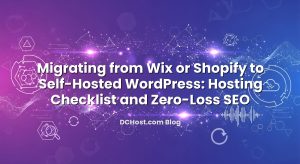İçindekiler
- 1 So, what should you call this thing you’re building?
- 2 What makes a good domain name, really?
- 3 .com vs .io vs .ai (and friends): How TLDs shape perception
- 4 SEO reality check: What search engines care about
- 5 The naming workshop: How I actually brainstorm and decide
- 6 Security, trust, and the quietly critical details
- 7 When you need to switch: Doing a domain migration without the drama
- 8 Real stories: What worked, what backfired
- 9 The simple roadmap: From idea to confident launch
- 10 Wrap-up: Your name, your north star
So, what should you call this thing you’re building?
I still remember a late Tuesday night, staring at a blinking cursor with a shortlist of names that looked brilliant at 2 a.m. and questionable at 9. Ever been there? You fall in love with an idea, only to discover the clean .com is taken, the .io is parked for a small fortune, and the .ai is available but you’re not sure what it says about your brand. That’s the moment you realize picking a domain name isn’t just an availability check — it’s a brand decision, an SEO decision, and honestly, a “what will people think when they hear this out loud” decision.
Here’s the thing: your domain isn’t just an address. It’s the front door, the business card, and the name people type when they’re trying to find you from memory. In this guide, I’ll walk you through how I choose domain names for clients and my own projects, what I weigh when deciding between .com, .io, and .ai, how that choice actually lands with search engines, and how to switch later without blowing up your traffic. We’ll talk vibe, trust, practical SEO, and the little details that quietly make a name unforgettable. Grab a coffee; this is the fun part.
What makes a good domain name, really?
The best domain names feel like they’ve always been yours. They’re short enough to remember, easy to say without spelling it out, and sturdy enough to carry your brand five years from now when your product evolves. That’s the brand test I use. If I have to explain the hyphen or clarify which letter is doubled, I go back to the drawing board. If someone hears it once and types it correctly on the first try, that gets a gold star. If it looks good on a logo, an email signature, and the back of a hoodie, even better.
There’s the phone test: say the name out loud as if you’re leaving a voicemail. If you catch yourself spelling every second letter, it’s probably not the one. And there’s the friend test: text the name to one friend and ask them to read it back later from memory. If they stumble or misread it, friction is hiding in plain sight. It’s amazing how quickly those two little tests filter out clever spellings that seemed irresistible in a brainstorming session.
Here’s where it gets sneaky: the perfect name today has to grow with tomorrow’s version of your product. If your app starts with document signing and ends up being a full workflow platform, a hyper-specific domain can box you in. On the flip side, a name that’s too generic can feel forgettable. I try to land in that sweet spot where the name hints at the value — not a single feature — and leaves room for the brand to stretch. That way, a pivot or expansion doesn’t need a rebrand.
Don’t ignore the basics while you’re dreaming big. Check for unwanted meanings in other languages if you plan to go global. Do a quick sanity check for trademarks in your main markets. And consider how it pairs with your social handles. When all those stars line up — easy to say, easy to remember, clean on the page, and free from legal landmines — you’re close to a keeper.
.com vs .io vs .ai (and friends): How TLDs shape perception
I’ve watched the vibes around TLDs evolve in real time. .com is still the default in many people’s minds. If your audience is broad or non-technical, .com feels familiar and trustworthy. It’s the version grandparents try first when they type your name in the browser bar. The catch is availability: many clean .coms are spoken for, which tempts people to bolt on hyphens or string words together in ways that look like a tongue twister. That’s rarely worth it.
.io has become shorthand for “startup” in tech circles. When I see a .io, I instinctively expect developer tools, SaaS, or something ecosystem-y. It’s crisp, it signals modernity, and it doesn’t carry the corporate feel some .coms do. The tradeoff is how it lands outside tech. A non-technical audience may ask, “Is that a typo?” That doesn’t mean you shouldn’t use it. It means your marketing needs to reinforce that this is the real address, not a placeholder.
.ai has picked up its own energy, thanks to the wave of machine learning tools. It can be a shortcut to saying “we’re an AI brand.” That’s powerful if you actually are. If your product is barely AI-adjacent, the TLD can feel like wearing a lab coat to a cookout. Some buyers will love it; others will wait to see if you’re legit. The other subtle consideration is longevity: if AI is central to your mission for the next decade, fantastic. If it’s a seasonal feature, be sure the name won’t age faster than your business.
There are plenty of other great TLDs, especially for local or industry flavors. If you’re leaning in that direction, I like to sanity check the options against the current list of recognized TLDs so I know exactly what I’m working with. No need to overcomplicate it though. The right TLD is the one your audience recognizes, your team loves, and your future self won’t regret.
SEO reality check: What search engines care about
Let’s clear the fog. I’ve never seen a site rank well just because it chose .com, and I’ve never seen a site sink because it went with .io or .ai. Search engines care about whether your name is consistent, memorable, and supported by good content and technical basics. The TLD itself doesn’t hand out ranking trophies. What it does influence is trust and behavior: do people click your result, do they remember you later, and does your brand feel legitimate when they see it in an email or a paid ad?
Where TLD does matter is geotargeting. Country-code domains can signal location, and that can be helpful if you’re focused on a specific market. Some country TLDs are treated more like generic domains these days, but I still ask a simple question: do I want search engines and users to infer a location from my domain? If yes, great. If no, a generic TLD (.com, .io, .ai, and many others) keeps it flexible. If you ever do need to move from one domain to another, set up a careful redirect plan and tell search engines clearly what’s changing. When I guide clients through a domain move, I almost always share Google’s guide to moving a site to a new domain and walk through it step by step with them.
Another common question: do keywords in the domain help? They can make the name more descriptive, which helps humans. But cramming in keywords won’t save weak content, and it can make your brand sound generic. I like a gentle touch here. If one meaningful keyword fits naturally and makes the name clearer, wonderful. If it turns the domain into a sentence, it’s doing more harm than good.
Technical hygiene matters more than people admit in the naming conversation. Solid DNS setup, fast response times, and clean redirects all support SEO and reliability. If you’re brushing up here, this explainer on DNS records from A to TXT and CAA is a friendly way to make sure the basics are tight. And when it comes time to point your traffic to a new domain or host, you’ll be glad you know how to make DNS propagation feel instant by planning TTL changes ahead of time.
The naming workshop: How I actually brainstorm and decide
When I sit down to name something, I don’t start with availability. I start with story. What’s the one-liner your future fans will say about you? If they had to pitch a friend in a crowded cafe, which word would they lean on? I like to collect those words first, then riff on combinations that feel effortless to say. The ideas that survive the first cut get read out loud, written in lowercase, UPPERCASE, and Title Case, and tried on next to a simple logo. Names that feel good in every format have a way of sticking around.
Then I imagine the name in the wild. A support email from [email protected]. A calendar invite from [email protected]. A podcast host saying, “Visit name dot something.” If I cringe or anticipate confusion, it’s not worth it. This also helps me pick between .com, .io, and .ai when multiple options are on the table. If I’m serving a developer audience, .io sometimes feels like a friendly handshake. If I’m selling to a broad consumer base, .com’s familiarity saves me from needless explanations. If the product lives and breathes machine learning, .ai telegraphs that without a single sentence.
Once I have a shortlist, I’ll quickly validate social handle availability, check for close lookalikes that could confuse customers, and do a lightweight trademark search in primary markets. I also like to double-check TLD specifics with ICANN’s overview of registrars and registries, just to confirm the policies, renewal norms, and what privacy protection looks like for that extension. Some TLDs handle ownership privacy differently, and that matters if you’re sensitive about your contact details being public.
Only after all that do I check the actual availability and pricing. If the perfect .com is unavailable but the .io or .ai is clean and on-brand, I’m comfortable using it — especially if I can buy the .com later. If both are available, I picture the buyer saying the domain out loud to a colleague. The one that creates fewer clarifying questions is the one I pick. That sounds simplistic, but I’ve learned to trust it.
Security, trust, and the quietly critical details
Let’s talk about the stuff that can make or break trust without anyone consciously noticing. First, make sure your registrar account is locked down with strong 2FA and that your domain has transfer locks in place. Second, enable DNSSEC if your DNS provider supports it. It’s one of those under-the-hood protections that help guarantee your visitors reach the real you, not a spoofed copy. If this is new territory, here’s a friendly primer on what DNSSEC does for your domain’s authenticity and how to think about it in practical terms.
Next, make HTTPS a zero-debate default with a legitimate certificate and automatic renewals. When your brand is young, every split-second impression matters. A warning screen or a wobbly padlock icon at launch is a momentum killer. And while we’re here, line up your email authentication records so your messages actually land. Nothing says “unprepared” like welcome emails appearing in spam because SPF, DKIM, and DMARC weren’t set up. These are tiny details, but tiny details are how first-time visitors decide whether to trust you.
Ownership details also matter on day one and day 401. Keep renewal reminders in more than one inbox, assign a clear owner for the domain inside your team, and write down the “recovery plan” for what happens if someone leaves. I’ve seen great teams lose domains simply because a card expired and the notification went to an ex-employee. That’s not an SEO problem or a branding problem. That’s an avoidable heartache.
When you need to switch: Doing a domain migration without the drama
At some point, you might land a better name or finally acquire the .com you’ve wanted. Wonderful. The part that scares people is the move. It doesn’t have to be scary if you approach it calmly. Start by mapping every old URL to its new destination and setting up permanent redirects. Then introduce the new domain to search engines clearly, update sitemaps, and let your marketing channels echo the change consistently. If you want a straightforward play-by-play, here’s how I like to transfer a domain without downtime and keep everyone calm during the process.
Before you flip the switch, adjust your DNS TTL values so changes propagate faster. Do that too early and you’re fine; do it too late and you’re stuck waiting. I keep a simple checklist and walk through it like a pre-flight routine. If you haven’t done this before, this guide on how to make DNS propagation feel instant will save you from the most common headaches. And if you want to refresh the fundamentals, the plain-English tour of DNS records from A to TXT and CAA is a perfect warm-up.
One more thing: when you move, don’t forget the human side. Update email signatures, socials, app store listings, and the places your customers already know you. If you’re announcing a bigger rebrand, make it a moment. It’s your chance to reset the story and invite people to the next chapter. For the technical handoff, I often keep the old domain active long enough to catch stragglers, forwarding politely for months. It’s not about squeezing extra SEO juice. It’s about being a good host to your future self.
Real stories: What worked, what backfired
A startup I advised grabbed a snappy .io because the .com owner wanted a mountain of cash. Their audience was developers, so it landed perfectly. Two years later, after a Series A and a broader sales motion, they bought the .com and migrated. The result wasn’t “SEO magic.” It was a smoother sales conversation. Enterprise buyers are conservative by nature. Seeing the .com on legal docs and security questionnaires removed a half-second of doubt. Tiny, but real.
On the flip side, a solo founder I worked with launched on a clever domain hack. It looked witty on a sticker, but customers constantly mispronounced it. Support emails were misspelled. Referrals went to a competitor with a similar name. We swapped to a cleaner .ai that actually matched what the product did, and complaints vanished overnight. The brand didn’t change; the friction did.
Then there was the ecommerce shop that insisted on keyword stuffing the domain. It did them no favors. The name sounded bland, users forgot it, and their ad team dreaded saying it out loud. We rebranded with a slightly more abstract name that felt like a proper brand. The ranking didn’t drop, the click-through improved, and their emails stopped getting mistaken for spammy clones using lookalike keyword domains. Again, not technical wizardry. Just the right name for the right audience.
The simple roadmap: From idea to confident launch
Here’s how I tie it together when the clock is ticking. First, get clear on your audience and what they expect to see in their browser bar. Second, generate names that sound good on the first try and look right everywhere. Third, try the phone test, the friend test, and the future test. Fourth, decide which TLD supports the story you want to tell — familiar and broad, tech-forward, or explicitly AI-centric. Fifth, validate handles, trademarks, and lookalikes. Sixth, buy the domain and lock down the security basics. Seventh, launch with confidence, and if a better name appears later, migrate with a deliberate plan and steady communication.
That’s the practical side. The brand side is simpler: pick a name you’re proud to say. If the team smiles when they hear it, you’re onto something. If your first users repeat it unprompted and spell it right in Slack, you’re onto something. If it makes room for your product to grow, you’re onto something. The right domain doesn’t guarantee success, but it makes the path a little smoother and the story a lot stronger.
Wrap-up: Your name, your north star
Choosing a domain is one of those decisions that feels small until it’s not. It touches branding, SEO, trust, and even operations. The truth is, you have more than one good option. .com is steady and universal, .io speaks tech fluently, and .ai signals a bold place in the machine learning world. The best choice is the one that fits your audience and your next chapter, not just the one that’s available this afternoon.
If I had to leave you with a checklist you could remember without writing it down, it’s this: pick a name that’s easy to say, easy to type, and hard to confuse. Choose a TLD that makes sense for who you’re serving. Lock down the security basics, and plan your redirects as if you’ll move someday, because you probably will. If you need a steady hand, bookmark Google’s guide to moving a site to a new domain, and keep a couple of practical references handy on DNS, including how to make DNS propagation feel instant and what DNSSEC does for your domain’s authenticity. You’ve got this. And when your new domain lands in the wild and just feels right, you’ll know you made the call your future self will thank you for.





